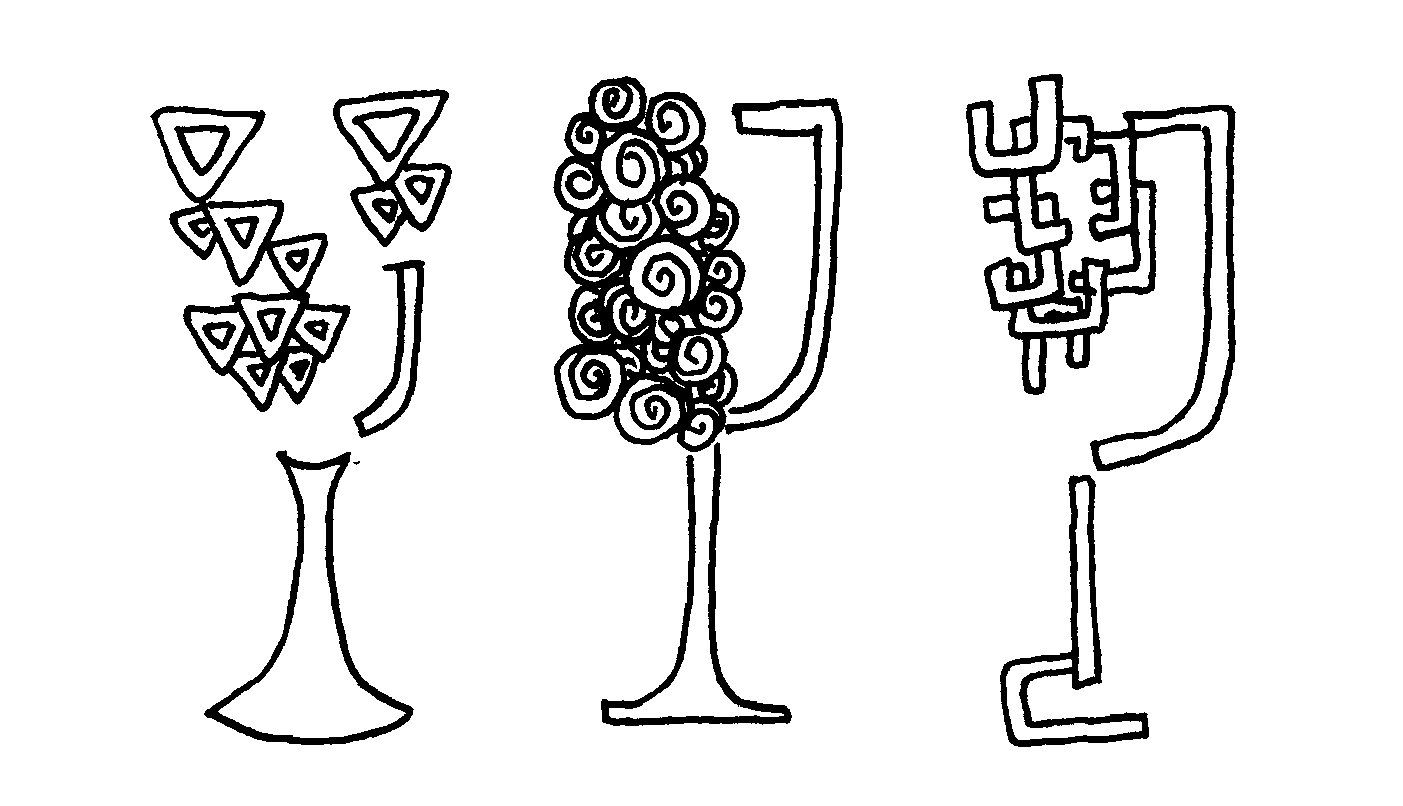What’s The Best Champagne Part 1: Grapes & Vintage
What’s the best champagne to buy? Well… let’s back up a bit.
What exactly are you looking for? A champagne that’s great value? A special occasion splurge? Something to cellar for 20 years until your toddler turns 21? One that’s extraordinarily dry? Or fruity and lush?
Depending on your mood, vibe, intention and purpose, these will all, obviously, require very different champagnes. Luckily, there are clues on champagne labels that will give you a bit of an idea as to what that champagne is like and if it will suit your champagne needs-of-the-moment!
The label will tell you…
the grapes involved (which determine its general style)
whether it’s a vintage or non-vintage
the dryness/sweetness level of the wine
Read on for details about each of these labels clues and what these reeaaaally mean for each particular champagne. How will it taste? What’s it good for? Will you like it? Should you buy it?
What grapes are in it? Does it have a particular style?
First things first, if you’ve been following, you might have read in our 4 Things You Must Know About Champagne (go back and catch up, if you haven’t!) champagne is made primarily of three grapes: Chardonnay, Pinot Noir, and Pinot Meunier.
Most champagnes are a blend of all three grapes!
Most entry level (the most affordable) champagnes are blends, meaning they are made from a blend of usually all three of the above listed grapes.
Each grape variety brings some specific attribute to the wine. Chardonnay is leaner and more citrus and mineral-driven, while the two Pinots are fruitier and have a bit more body. Champagne producers (called “champagne houses”) tend to favor certain ratios to make their consistent “house style.” For example, some might be Chardonnay heavy, while others might favor lots of Pinot Meunier.
👉 What’s it for? Want something predictable, approachable, and just plain good, that’s priced on the lower side? Look for one of these. These are usually a house’s flagship wine. They are reliable and consistent.
👉 How to find it? It might say some generic word that has no real meaning like “Tradition” or “Cuvée” or it might say nothing at all. If it’s not one of the following two styles (Blanc de Blancs or Blanc de Noirs), you can assume it’s a blend.
A you move up the champagne tier a bit, you might come across one of these more “intermediate” styles:
Blanc de Blancs
A Blanc de Blancs (100% Chardonnay) will proudly state it somewhere on the label!
These champagnes are made from 100% Chardonnay (hence the name: “white of whites”). For the nerds out there, in rare occasions there could be one of the other white champagne grapes blended in there, too. But 99% of the time, they will just be Chardonnay.
Ok, but don’t let the common idea of oak-laden, buttery Chardonnay influence your thoughts about Blanc de Blancs. Blanc de Blancs are nothing like what some might expect from Chardonnay.
Chardonnay tends to be the most revered of the three champagne grapes. It produces champagnes that are sharp, linear and delicate with lots of elegance or finesse. In other words, they might be laser-like on your tongue and less “round and creamy” than other champagnes. The flavors are more delicate and subdued and they might require more of your thinking brain to appreciate them fully. The Chardonnay grape (quite neutral in flavor) lets the minerality from the soil shine through in the wine. It also lends the wine bright lemon and green apple notes and lots of acidity.
Part of the reason why this gives these wines so much clout is because that high acid means these champagnes can typically age for a very long time (20-30+ years) 😲.
👉 What’s it for? If you want long ageability or if you want a linear, delicate, and citrus and mineral-driven champagne, look for Blanc de Blancs.
👉 How to find it? These will say Blanc de Blancs on the label.
Blanc de Noirs
As you might guess, Blanc de Noirs is a champagne made from 100% black (or, as we usually call them, ‘red’) grapes. Both Pinot Noir and Pinot Meunier are red grapes, so Blanc de Noirs might be one or both of these.
Pinot Noir and Pinot Meunier both lend much more fruitiness and body to the wine than Chardonnay. A Blanc de Noirs, therefore will be a bit fuller in flavor, have a bigger, wider, or rounder mouthfeel and more ripe fruit notes like blackberry or strawberry.
Don’t get me wrong, they aren’t going to be big ol’ fruit bombs. But relative to the Blanc de Blancs thinkers, these are much more accessible right away (or while you’re multitasking—ie, drinking champagne and mingling with strangers at your next New Year’s Eve party).
👉 What’s it for? You want a splurge Champagne, but also one that’s fruitier and fuller-bodied and not quite as linear and acid-driven as a Blanc de Blancs.
👉 How to find it? These will say Blanc de Noirs on the label.
Vintages and aging
Was the champagne made in one particular year? Or is it a blend of many years? All champagnes fit into one of the following two vintage categories:
Non-vintage champagne (or NV) (left); vintage champagne (right)
Non vintage (NV)
Most champagnes, and especially most entry-level champagnes, are non vintage (or NV for short). Every year, champagne houses will hold back some wine (before it becomes bubbly) from that year’s harvest. These wines they hold back are called reserve wines. Non vintage champagnes, instead of being from the current year’s harvest, are blends of reserve wines from lots of previous years.
This is super cool and very unique to champagne as most every other wine in the world strictly makes wines from one vintage.
🥸 NERD ALERT 🚨
If you want to know the reasons behind why this is traditional in champagne (which you should because when you hear it you’ll be like, “Oooooh! Totally makes sense”), this is why:
Champagne, the region, is very cold (and used to be even colder) and is known for frost and other unbecoming weather events. This, historically, meant that it was tough to trust that one year’s harvest would bring in enough healthy and ripe fruit to make enough champagne for a producer to sell and make an income off of. (It was not uncommon for freezing temperatures to ruin much, if not all, of a certain year’s grape crop.)
The solution? Save some wine in barrels every single year, so that in bad-harvest years, the winemaker can use those reserve wines to stand in for what was lost. It’s a way of hedging their bets and ensuring that they can make enough champagne every single year.
One non-vintage champagnes can be a blend of wines from dozens of previous harvests.(In addition to different years, reserve wines can also be different grape varieties and from tons of different vineyards. In fact, it’s possible for one champagne to be a blend of up to 200 different reserve wines. Talk about one craaaaazy difficult job! For more discussion on the job of the champagne blender, the chef de cave, go here—if you’re not a member, here’s the link to join!)
The thing for you to note is that all this blending means that the winemaker, or chef de cave, in this case, is able to create a champagne that is consistent with their “house style.” In other words, there is no vintage year variation. A NV champagne from a specific house (aka producer) will taste the same year after year. One less thing to think about, phew!
👉 What’s it for? NV champagnes are consistent, more approachable and predictable and less expensive than vintage champagnes. No need to worry about vintage variation. They are aged for less time than vintage champagnes, so their yeasty, bready character is not quite as intense.
👉 How to find it? If it doesn’t have a vintage date (eg, 2013, 2019, etc.) you can assume it’s a NV.
Vintage
Then you have vintage champagne. These are the champagnes that are from one specific year’s harvest. Most champagne houses don’t make vintage champagnes every year. They’ll wait until they get a particularly exceptional harvest and then they’ll choose to make a vintage champagne.
Vintage champagnes, because they are the best of the best, and are made with an intention to age, are made from the best quality juice and are typically more expensive than non-vintage champagnes.
👉 What’s it for? Looking to give someone a champagne with their birth year? You’ll be looking for a vintage champagne. These are super high quality and very age worthy (20-30+ years).
👉 How to find it? These will have a vintage date (eg, 2013, 2019, etc.) somewhere on the label.
Are you looking to experience the uniqueness of an aged champagne?
We wouldn’t recommend popping a vintage champagne that is less than 10 years old. These are meant to be drunk older. Most houses don’t release their vintage champagnes earlier than this anyway, just for this reason!
Look for a vintage champagne that is at least 10-20 years old to experience those super caramelly, nutty, and cheesy notes that old champagnes have developed. Definitely not everyone’s cup of tea, but something everyone should try at least once!
We’re gonna give you a little bit of a break to process this information before we move onto part 2 of Choosing The Best Champagne. PHEW. 😅
What kind of Champagne is on your list to buy next? A non-vintage blend that will please the party and not break the bank? Or a special splurge: a gift or for yours truly? Citrusy or fruity? Let us know what you’re excited about trying next in the comments!
Then we’ll see you back here next week for part 2: sweetness levels.
P.S. Are you a member of Sunday School Wine Society? We made you even more Champagne videos, and shopping guides, and downloadable cheat sheets, oh my. Learn Champagne like the back of your hand 👉








Champagne doesn’t always have to crowd the spotlight. There is a sparkling wine out there that is the perfect go-to bubbly that will consistently impress your friends, please your palate, and not burn holes in your pockets. Find out our absolute favorite bubbly for when you’re a lush on a budget.